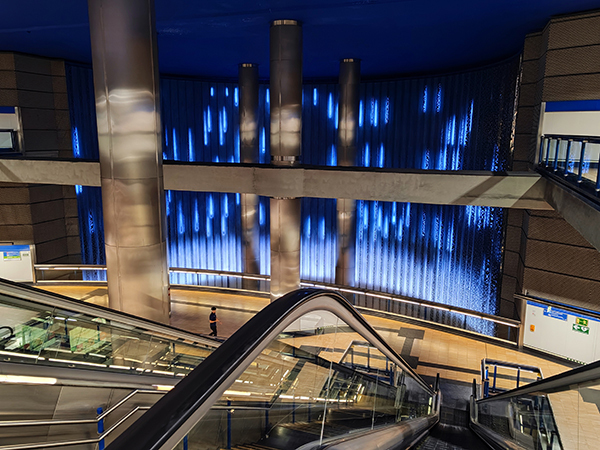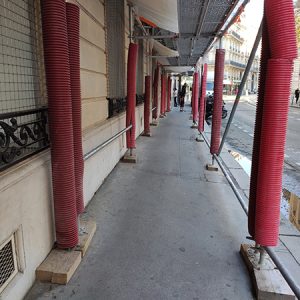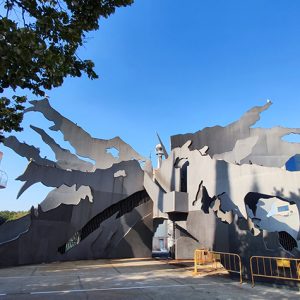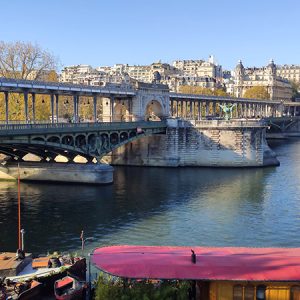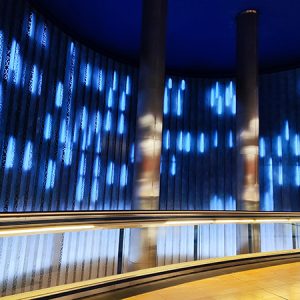Chamartín Metro Station in Madrid (Spain)
$ 30,00
Description
Location: Madrid, Spain
Taken on: September 11, 2023
Format: JPEG
File size: 7 MB
Dimensions: 4096 x 3072 pixels
DPI: 300
Photographer: Andrey Kashukov, Cyprus
Photo can be used in posters, brochures, magazines, websites, blogs, business cards, applications, social media branding, packaging, postcards, notebooks, invitation backgrounds, flyers, banners, badges, stickers, collages, booklets, illustrations, etc.
Photo can be used in applications: Adobe Photoshop, Adobe Photoshop Lightroom, Adobe Photoshop Elements, Adobe InDesign, Adobe Illustrator, Adobe XD, Adobe Express, Adobe After Effects, GIMP, Photopea, Krita, Pixlr E, Pixlr X, Paint.NET, Affinity Photo, Corel PaintShop Pro, CorelDRAW Graphics Suite, Capture One Pro, Luminar Neo, Pixelmator Pro, ACDSee Photo Studio Ultimate, Affinity Designer, Procreate, Sketch, etc.
Iguazú’s Digital Cascade – Chamartín Metro Station, Madrid
Capture the stunning fusion of modern architecture and dynamic light art with this high-resolution photograph of the “Iguazú” digital waterfall in Madrid’s Chamartín metro station. Perfect for projects that require a touch of futuristic elegance, urban energy, or abstract beauty.
Immerse yourself in the subterranean heart of Madrid with this captivating digital photograph, taken on September 11, 2023. This image offers a breathtaking view of the iconic Chamartín metro station, renowned for its spectacular light installation.
From a dramatic high angle, the viewer looks down a series of sleek escalators, their glass balustrades and polished steel creating strong leading lines that draw the eye into the frame. The composition is dominated by the monumental “Iguazú” art installation—a vast, curved wall that comes alive with a mesmerizing cascade of blue and white lights, simulating a powerful, flowing waterfall. This digital masterpiece, designed by Vicente Patón and Alberto Tellería, transforms the station into an ethereal, gallery-like space.
Gleaming stainless steel columns punctuate the scene, reflecting the cool blue light and adding to the station’s futuristic and industrial aesthetic. The warm tones of the floor tiles provide a subtle yet effective contrast to the otherwise cool palette. In the distance, a lone figure stands, offering a sense of scale and human presence within this grand, modern cavern.
This photograph is not just an image of a metro station; it’s a snapshot of Madrid’s commitment to integrating public art and innovative design into the daily lives of its citizens.
Image Details:
- Location: Chamartín Metro Station, Madrid, Spain
- Artwork: “Iguazú” digital waterfall
- Style: Architectural, Urban, Abstract, Modern
- Mood: Futuristic, Dynamic, Serene, Expansive
Ideal For:
- Website backgrounds, headers, and hero images
- Travel blogs, articles, and promotional materials
- Digital art projects and graphic design
- Presentations and corporate branding
- Content creators seeking high-quality, unique urban imagery
Madrid’s Chamartín Station: A Major Transport Hub with a Modern Edge
Madrid-Chamartín-Clara Campoamor, commonly known as Chamartín, stands as one of the Spanish capital’s primary transportation arteries. Located in the northern part of the city, it functions as a critical interchange for metro, regional, and high-speed trains, making it a vital gateway for both Madrileños and visitors. The station is a bustling hub of activity, connecting millions of passengers annually to destinations across Spain and beyond.
The station is directly served by two of Madrid’s key metro lines:
- Line 1 (Light Blue): This line traverses the heart of Madrid, offering a direct connection to the city center, including the Puerta del Sol, and the main Atocha railway station.
- Line 10 (Dark Blue): This line provides a crucial north-south axis, linking Chamartín with key business districts and residential areas.
Beyond the metro, Chamartín is a major hub for Spain’s national and regional rail network. It is the primary departure point for high-speed AVE trains to the north and northwest of the country, including destinations like León, Valladolid, and Burgos. It also serves as a terminus for numerous other long-distance and medium-distance Renfe services.
Furthermore, the station is deeply integrated with the Cercanías Madrid commuter rail network. Multiple Cercanías lines converge at Chamartín, providing frequent and reliable connections to the wider Madrid metropolitan area, including a direct link to Adolfo Suárez Madrid-Barajas Airport (via line C-1 and C-10). A vast network of local EMT buses also stops at the station, ensuring seamless travel to all corners of the city.
In a tribute to the influential politician and women’s rights advocate, the station was officially renamed Madrid-Chamartín-Clara Campoamor. This modern facility, primarily constructed between 1970 and 1975, has undergone significant updates over the years to accommodate the increasing number of passengers and the demands of a modern transportation network. Inside, travelers will find a wide array of services and amenities, including numerous shops, restaurants, car rental agencies, and luggage storage facilities.
An intriguing piece of the station’s history lies in its “ghost” platform – a never-used platform and tunnel that were part of an abandoned project. This hidden element adds a layer of mystique to the bustling, modern station that plays such a pivotal role in Madrid’s daily life.
